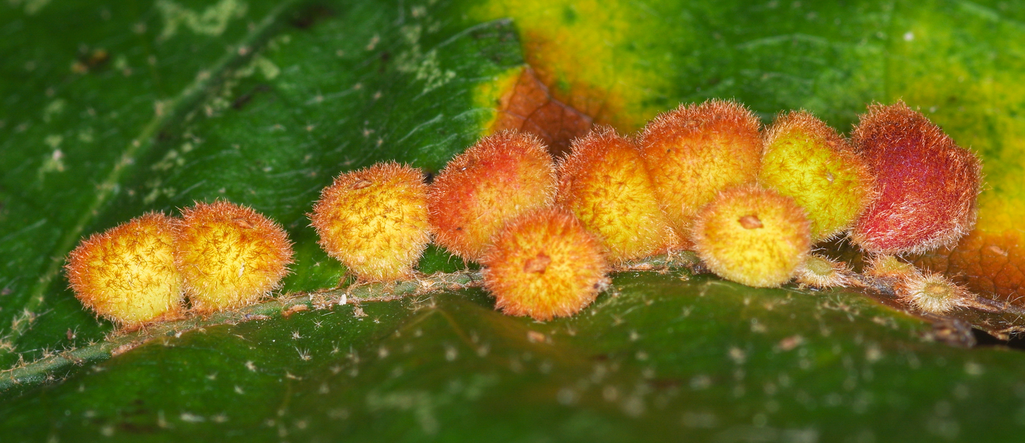Unknown red-oak-fuzzy-red-globs
Small clusters of red-orange (rarely green) globular galls densely covered in short white pubescence not obscuring their surface. The outer face of each gall is blunt or flattened, with a definite scar at the apex. They occur in groups of 2-4 scattered along the upper midrib and main veins of unidentified red oak species, sometimes in clusters of up to 25.
They have been observed on Quercus velutina in October in Nova Scotia, in September and October in Pennsylvania, and in September in Michigan. A similar gall was seen on Quercus marilandica in September in Ohio. A similar gall was observed on Quercus ilicifolia in Maryland in August.
This species is often identified as Callirhytis piperoides (which lacks its distinctive scar and has much longer hairs) and Callirhytis furva. Another gall, possibly a variant of the same species, is commonly observed that shares the same apical scar, but has much longer hairs, arranged in a flat fringe around the apex. Galls have been observed that seem intermediate (2) between the two undescribed galls. A cluster has been observed containing one with longer hair and two with very short hair, suggesting these are variants (possibly inquiline-induced) of the same species.
”- Gallformers Contributors: (2024) Gallformers ID Notes©



